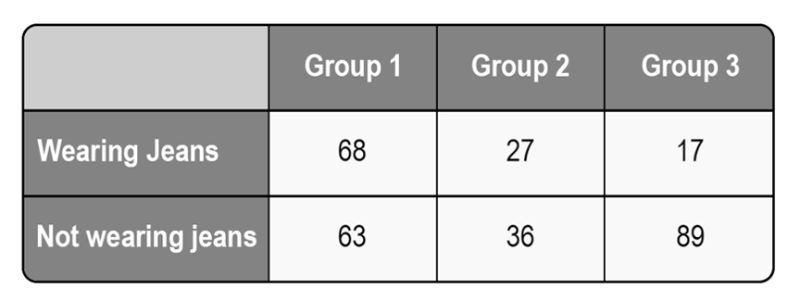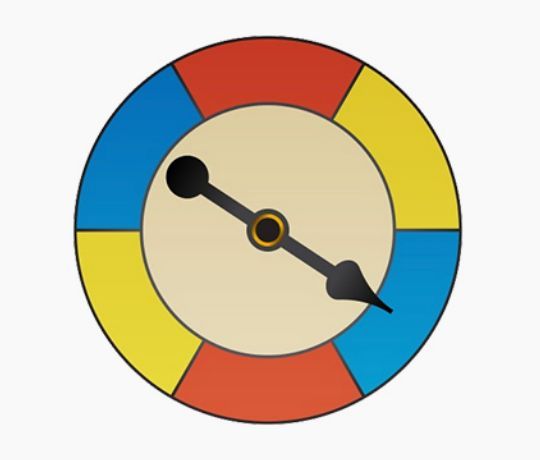Probability is something that we deal with every single day without realizing it. Whenever we open our weather app to check for the chance of rain or when we consider the possibility of winning the lottery, we're really dealing with probability. But probability isn't just something that we can think about or consider; it's something that we can actually calculate. Now I know this might not be the best news for you knowing that you have another thing to calculate, but you don't have to worry because here I'm going to walk you through the basics of calculating probability and some of the notation that goes along with that. So let's go ahead and get started.
Now when working with probability mathematically, we consider the probability of different events and we write this as p with the event in parentheses. Now when I say event, I don't just mean some big event like a party. An event is anything, no matter how big or small, that could happen. So if I was considering the probability of it raining, I would write p with rain in parentheses. Or if I was considering the probability of getting heads when flipping a coin, I would write p with heads in parentheses.
Now when actually calculating probability, we need to consider the 2 different types. So if I have a coin in my hand and I'm going to flip it but I want to know the probability of getting heads if I do. Since this is based on what could possibly happen, this is referred to as theoretical probability. But if I were instead to take that coin and flip it 3 times and record the results of each flip and calculate the probability of getting heads based on that, since this is based on what actually did happen, this is referred to as empirical or experimental probability since we performed an experiment here.
Now when calculating the theoretical probability of getting heads, since I know there are only 2 possibilities when I flip a coin, heads or tails, and only one of those is heads, the theoretical probability of getting heads on a coin flip is equal to 12. Now with our empirical probability over here, since we got heads on 2 out of those 3 tosses, the empirical probability of getting heads on a coin flip is equal to 23 here.
Now, the most important thing to consider here is that our theoretical probability was calculated before any events actually happened, whereas our empirical probability was calculated after our events actually occurred based on data.
Now when looking at our formulas that we actually used to calculate these here, these look slightly different just because they're tailored to each different type of probability, but they're really the same thing. So with our theoretical probability here, we took the number of outcomes that included our event. So in this case there was only one way to get heads, and then we divided that by the number of total possible outcomes, either heads or tails. So we took our event and divided it by our total. But with our empirical probability, we took the number of times our event actually occurred, in this case twice, and divided that by the number of total trials. So we still took our event and divided it by our total.
Now that we've seen the basics of calculating probability, let's work through some examples together. So looking at our first example here, we're asked, when rolling a 6-sided die, what is the probability of rolling a number greater than 3? So here, we're looking for the probability of getting a number greater than 3. Now when rolling a 6-sided die, I know that I could roll any number 1 through 6. And when looking at these possible outcomes here, I see that only 3 of these numbers are greater than 3. So when calculating the probability here, I would take the possible outcomes here that include my event, in this case, 3 of them, and divide it by the number of total possible outcomes. In this case, since there are 6 sides of that die, there is 6 total possible outcomes. Now simplifying this fraction gives me a probability of 12, and you'll often see probabilities reported as decimals. So here, the probability of rolling a number greater than 3 is equal to 0.5.
Let's look at our other example here. Here, we're given data and asked to find the probability of rolling a number greater than 3 based on that data of rolling a 6-sided die 10 times. So here we're calculating empirical probability because we're actually given data to work with of events that actually already happened. So here we're calculating still the probability of rolling a number greater than 3, but we're going to take a look at this data table. So since there were 10 total rolls here, I already know that the number on the bottom of that fraction is going to be 10 for the total number of trials. Then I want to look for the number of times that my event actually occurred. Since my event was rolling a number greater than 3, I want to look for the number of times that that happened. So on that first roll, I got a 6, then I got a 4, then I got a bunch of fives in a row and a 6 and then a 4 and a 5. So 8 out of those 10 times, I roll the number greater than 3. So taking that probability and simplifying that fraction, I get a probability of 45 or as a decimal 0.8.
Now something that you might be wondering here is why our empirical probability is so different than our theoretical probability when we're technically calculating the probability of the same event. And the answer comes down to our sample size. So since we only did 10 trials, this is not quite so close to our theoretical probability. But if I were to roll the dice a 100 or a 1...






